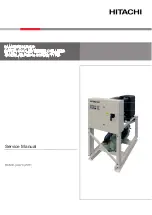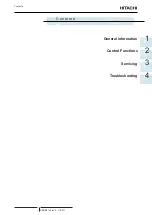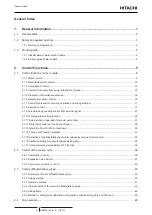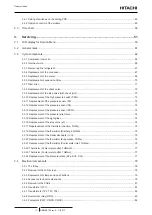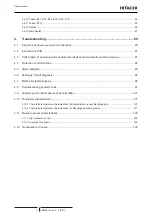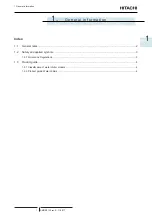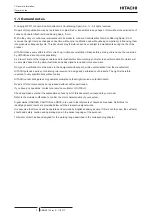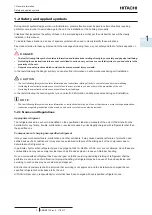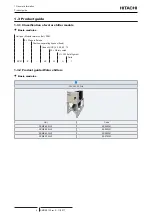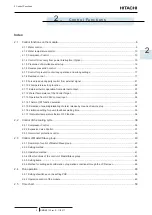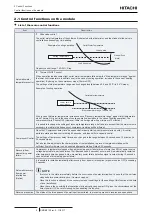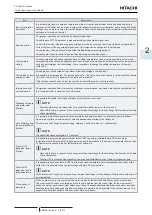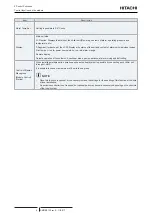
2 Control Functions
Control functions on the module
SMGB0120 rev.0 - 11/2017
7
2
Item
Description
Incorrect operation
prevention
It is not possible to switch between remote and main unit control, and between cooling and heating, during
operation of the chiller unit. An alarm is output with respect to such incorrect operation, and to wrong DIP switch
settings. Also, an alarm is output to prevent danger, in case that an operation order is input from a remote when
settings are for main unit control.
Demand control
Compressor operation can be limited by external signal input.
Forced thermo OFF: Compressor is stopped forcedly during external signal input.
Current limit function: Operation capacity is limited to make the running current lower than the setting value of
current limit control, during external signal input. Limit value can be changed by local settings.
Forced load-up: Load-up output is conducted forcedly during external signal input.
Capacity hold: Capacity control is ignored forcedly during external signal input.
2 temperature
setting
Cooling operation and heating operation have 2 setting temperatures each, and it is possible to select which
setting temperature is valid by external signal input. In case of operating with a different extraction temperature,
such as heat storage or air conditioning, it is not necessary to change the setting temperature of the main
chiller unit.
Forced load up from
external contact
Forced load up is conducted during outdoor order (non-voltage a contact) input.
It is possible to select whether "the pump shall stop" or "the pump can be kept working" in the event of a thermo
OFF, when thermo OFF judgement at the main unit is enabled.
(This function cannot be used when the function to control the number of units is used )
Information about
overhaul period
Compressor operation time for preventive maintenance is monitored, and when it reaches the overhaul period,
the "Overhaul mark" is shown on the LCD screen.
Disabling of remote
stop alarm clear
(Option)
It is possible to disable the release of alarms by remote stop order input.
?
N O T E
• Normally, alarms can be released by stop control from either remote or the main unit.
• Since this function is optional, it is necessary to make the settings for the enabling of this function at the time
of local installation.
Limit of waiting time
for pump feedback
(Option)
It is possible to determine pump interlock abnormality and output an alarm in case that no pump feedback
signal is input after a certain amount of time has passed upon startup of the chiller unit.
This time can be changed by local settings, between 1 and 30 minutes (in 1 minute steps).
?
N O T E
The default feedback waiting time is "unlimited".
Thermo OFF
judgement delay
(Option)
It is possible to delay the judgement time of thermo OFF to avoid immediate thermo OFF when water
temperature reached thermo OFF judgement value due to fluctuations in the amount of cold water flow, caused
by momentary variations in load or the activation of valves, etc.
?
N O T E
• Since this function is optional, it is necessary to make the settings for the enabling of this function at the time
of local installation.
• Thermo OFF is produced when reaching operation limit temperature, even if being in judgement time.
Thermo OFF
judgement due to
inlet temperature
It is possible to determine thermo OFF from the inlet water temperature (return temperature from load) of the
chiller unit. It is possible to change the settings of thermo OFF temperature.
?
N O T E
Since this function is optional, it is necessary to make the settings for the enabling of this function at the time of
local installation.
Preservation of
alarm data
When an alarm occurs, the contents of the alarm, as well as the date and time of occurrence are recorded.
The most recent 10 cases are stored, and then they are deleted from the oldest. Also, for the most recent 3
cases, the data of each sensor (right before occurrence, 10 seconds before and 20 seconds before) as well as
data regarding each setting and operation conditions are stored, and it is possible to check them later on. This
supports the early identification of the causes of alarm occurrence.

